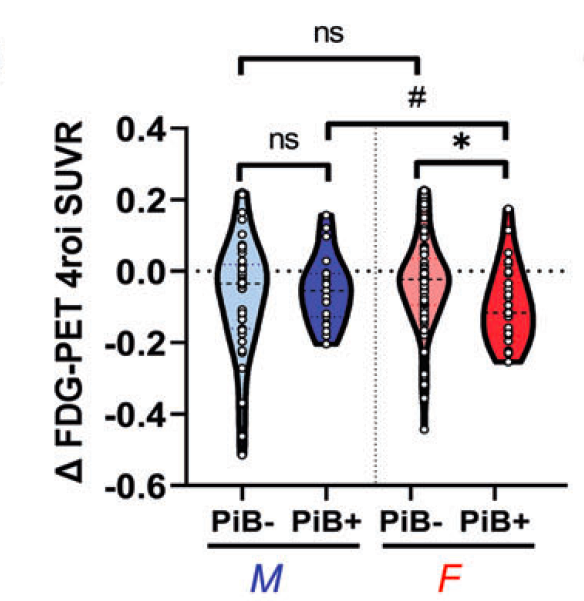
“Sting and p53 DNA repair pathways are compromised in Alzheimer’s disease.”
Thomas J. Nelson and Yunhui Xu – Marshall University. Sci Rep.
In this study, the increased DNA damage observed in patients with AD is linked to failures of neuronal DNA repair mechanisms, with greater levels of the inactive form of p53 potentially due to oxidative stress. The authors also found a depletion of STING from the Golgi apparatus, impairing an additional pathway that responds to DNA fragmentation.
Martí Colom-Cadena, et al. – University of Edinburgh and IQAC-CSIC. Neuron.
This study found accumulation of oligomeric Tau at synapses in brain sections from post-mortem patients with AD, even in regions with few Tau tangles. Greater amounts of Tau are built up at the presynaptic terminal than the postsynaptic, providing some of the most suggestive evidence from the human brain to date of Tau pathology spreading trans-synaptically.
Petrice M. Cogswell, et al. – Mayo Clinic. Nat Comm.
While many studies have found a correlation between cerebrovascular disease (CVD) and AD, the authors of this study argue against the existence of a causal link. Patients with earlier onset of CVD do not necessarily show earlier onset of AD, or vice versa, suggesting that neither condition is causing the other.
Egle Audronyte, et al. – Vilnius University. Med Sci Monit.
This study found that odor identification and discrimination tasks using the Sniffin’ Sticks kit were highly effective in discriminating patients with MCI, AD, and healthy controls. These tasks could serve as a rapid, affordable screening tool, especially in contexts where more sophisticated approaches may not be readily available.
“Sex differences in the progression of glucose metabolism dysfunction in Alzheimer’s disease.”
Jong-Chan Park, et al. – Sungkyunkwan University. Exp Mol Med.
In this study, impairment of brain metabolism was only correlated with amyloid accumulation among female patients. Transcriptomic data identified 26 metabolic genes that are differentially expressed in female patients, while only 1 was found in male patients. These differences may explain the sex differences in AD incidence rate.
Other notable open-access articles:
“Transcriptomic and glycomic analyses highlight pathway-specific glycosylation alterations unique to Alzheimer’s disease.” Xinyu Tang, et al. – UC Davis. Sci Rep.
“Abundant Aβ fibrils in ultracentrifugal supernatants of aqueous extracts from Alzheimer’s disease brains.” Andrew M. Stern, et al. – Harvard Medical School. Neuron.
“Phospholipase D3 degrades mitochondrial DNA to regulate nucleotide signaling and APP metabolism.” Zoë P. Van Acker, et al. – VIB Center for Brain & Disease Research. Nat Comm.
“APOE expression and secretion are modulated by mitochondrial dysfunction.” Meghan E. Wynne, et al. – Emory University.
“Endothelial Cells Are Heterogeneous in Different Brain Regions and Are Dramatically Altered in Alzheimer’s Disease.” Annie Bryant, et al. – Massachusetts General Hospital. J Neurosci.
Find a Zotero library with these articles, plus our Featured open-access article, here. For a Zotero library that also includes an additional 11 open-access articles, click here.




